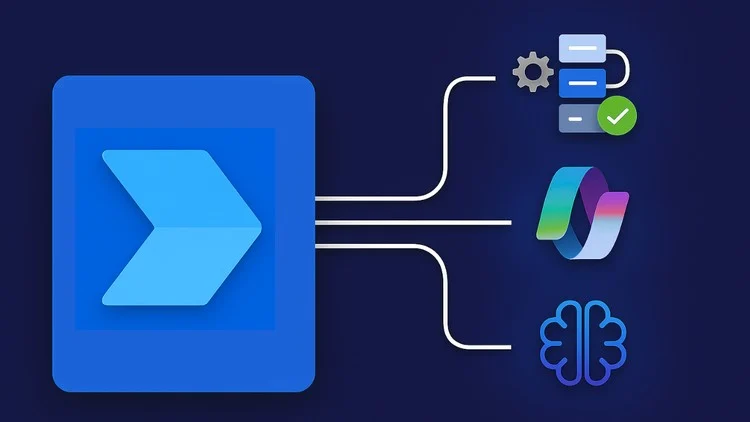Creating a SaaS product from a simple prompt is no longer a distant idea but a practical reality. Leveraging AI and no-code tools, individuals can translate an initial concept directly into a working software solution without writing any code. This approach dramatically lowers barriers, enabling faster development cycles and reducing the need for extensive technical skills.
By focusing on clear, actionable prompts and using AI-driven platforms, anyone can build an MVP or even a scalable SaaS product quickly. This shift allows entrepreneurs to focus on solving problems rather than struggling with development, streamlining the path from idea to market-ready product.
The move from prompt to product changes how software is built, emphasizing ideation and AI collaboration over traditional coding. This new process opens opportunities for small teams or solo founders to enter the competitive SaaS market with less time and cost investment.
Understanding Single-Line SaaS Creation

Single-line SaaS creation simplifies software development by reducing complex coding tasks to a single prompt or command. This approach leverages AI and no-code tools to produce scalable, professional-grade applications rapidly. It reshapes traditional development workflows by combining automated design, infrastructure setup, and deployment into one streamlined process.
What Is Single-Line SaaS Creation
Single-line SaaS creation enables users to generate functional software products from a concise, often one-line, input. Instead of writing detailed code, a user provides a prompt describing the desired application. AI interprets this prompt to create an AI-generated blueprint covering the software architecture, features, and user interface.
This method relies heavily on no-code platforms and AI models that handle coding, integration, and deployment. It eliminates the need for technical expertise while maintaining professional-grade quality through predefined scalable infrastructure. This approach allows non-developers and solopreneurs to build full SaaS products quickly.
Core Advantages of No-Code SaaS Solutions
No-code SaaS solutions significantly reduce development time and entry barriers. They allow users without programming skills to launch complex applications by assembling components visually or through AI-driven prompts. This accelerates the path from concept to product, often within days or weeks.
Key advantages include:
- Rapid prototyping: Change and test ideas rapidly.
- Lower costs: Avoid hiring developers or investing in extensive coding resources.
- Scalable infrastructure: Built-in cloud services ensure applications handle growth effortlessly.
- Professional-grade quality: Prebuilt templates and tested modules reduce errors.
This model democratizes software creation, enabling startups and small businesses to compete with larger companies by focusing resources on strategy and market fit.
How AI Streamlines SaaS Development
AI accelerates SaaS development by automating core tasks such as coding, UI/UX design, and cloud deployment. Using AI-generated blueprints, platforms translate user prompts into optimized codebases, creating applications ready for immediate use.
AI tools can integrate multiple components—databases, APIs, authentication systems—without manual intervention. This reduces human error and enforces best practices in code structure and security. AI-powered planning tools also assist in defining requirements and workflows, improving overall efficiency.
By combining zero-code methods with AI, developers and non-developers alike gain access to scalable, customizable SaaS solutions without writing traditional code. This transformation enables faster product iterations and market responsiveness.
From Prompt to Product: The Full Journey
The process of creating a SaaS product from a single prompt involves precise idea description and leveraging AI to translate that concept into a structured plan. Clarity in defining the app and effectively applying AI tools sets the foundation for efficient development.
Step 1: Describing Your App Idea
The first critical step is to clearly describe the SaaS application in a concise, structured prompt. This description should define the core functionality, target users, and key features. For example, specifying that the app manages subscription payments for freelance creatives sets a clear scope.
Including elements like user roles, workflows, and desired integrations helps the AI understand the product’s purpose. This precision prevents ambiguity, guiding AI toward generating relevant components that align with the product vision.
This stage benefits from fundamental design thinking principles: focusing on user needs and framing the problem correctly before moving ahead.
Step 2: AI-Driven App Blueprint Generation
Once the app idea is clearly described, AI systems generate a detailed blueprint. This blueprint typically includes architecture outlines, key modules, database schemas, and user interface sketches.
The AI translates the descriptive prompt into a logical sequence of technical elements, balancing practicality with user experience considerations. This output often resembles a project plan encompassing backend and frontend components.
Developers can then use this AI-generated blueprint to expedite coding or no-code assembly, focusing on refinement rather than initial structuring. The blueprint also aids in anticipating technical challenges early in the process.
Building and Deploying SaaS Apps with Imagine.bo
Imagine.bo streamlines SaaS app creation by automating coding, deployment, and infrastructure management. It integrates cloud services and compliance standards to deliver a production-ready app quickly. Users benefit from a one-click build process, automatic scaling, and built-in security features tailored for modern SaaS needs.
How the One-Click Build Works
Imagine.bo allows users to create SaaS applications through a simple interface that requires no coding skills. By entering specific prompts or configurations, the platform automatically generates the app’s frontend and backend code. This includes core functionalities like user authentication, payment integrations, and email notifications.
Behind the scenes, Imagine.bo leverages AI-driven automation to assemble these elements and prepares the app for immediate deployment. Developers and non-developers alike can launch their software without manual setup or extensive technical knowledge, reducing what typically takes weeks to a matter of minutes.
Automated Scaling and Cloud Deployments
Once the app is built, Imagine.bo handles deployment to cloud providers such as AWS, Google Cloud Platform (GCP), or Vercel. This ensures the application can scale automatically based on user demand without manual intervention.
The platform monitors resource usage and adjusts infrastructure accordingly, maintaining app performance during traffic spikes. This removes the need for complex cloud management skills while providing elastic scalability critical for SaaS products targeting growth.
Security, Analytics, and Compliance Features
Imagine.bo embeds security features compliant with industry standards, including GDPR and SOC2 requirements. This includes data encryption, secure authentication mechanisms, and regular audits to protect user information.
In addition, the platform offers integrated analytics dashboards. These dashboards provide real-time insights into user behavior, app performance, and operational metrics, helping teams make informed decisions.
Together, these features support the development of secure, compliant, and data-driven SaaS products without extra complexity for the builder.
Expert Support and Human Backup
Expert support and a skilled engineering team are critical in turning a prompt into a robust SaaS product. Their involvement ensures technical challenges are addressed swiftly, while maintaining the integrity and scalability of the application.
Role of Senior Engineers
Senior engineers provide essential oversight throughout the SaaS creation process. They offer deep technical knowledge to troubleshoot complex issues and optimize the codebase for performance and reliability. This level of expertise is vital for anticipating potential bottlenecks and designing scalable architectures.
They also mentor junior developers and enforce coding standards, safeguarding the product’s maintainability. Their strategic input often shapes critical decisions about technology stacks and integration methods, ensuring the product aligns with business goals and user needs.
Expert Guidance During App Creation
Expert backup teams play a key role in guiding the app development from concept to launch. They assist in translating user requirements into executable designs, reducing miscommunication between business and technical teams.
During development, expert guidance includes validating functionality, security checks, and implementing best practices for data backup and disaster recovery. This proactive approach prevents costly errors and data loss, a fundamental concern for SaaS applications.
This support often involves automated tools overseen by humans who ensure workflows are seamless, data versions are maintained, and recovery options are reliable. Having this human backup reinforces confidence in the product’s stability and future scalability.
Who Should Use Single-Line SaaS Platforms
Single-line SaaS platforms are ideal for users seeking rapid development with minimal technical overhead. They offer efficient pathways to build MVPs and tailored solutions without extensive coding skills. This approach benefits individuals and teams focused on speed, simplicity, and cost-effectiveness.
Founders and Solo Entrepreneurs
Founders and solo entrepreneurs benefit greatly from single-line SaaS platforms because these tools reduce reliance on large development teams. They can create functional MVPs rapidly, shortening the product validation cycle. For solo makers, the ability to launch a fully working web app or SaaS product using simple prompts means they can focus more on business strategy and customer development.
These platforms also accommodate founders with limited technical skills by abstracting backend and frontend complexities. Access to integrations with AWS, Heroku, or GitHub allows them to deploy scalable products without deep infrastructure knowledge. This results in lower upfront costs and faster time-to-market, crucial for early-stage startups aiming to attract users or investors.
Agencies and Client Project Management
Small agencies often handle multiple client projects simultaneously. Single-line SaaS platforms provide an efficient way to deliver custom solutions quickly. Agencies can build and prototype multiple SaaS applications or web apps without extensive development resources, allowing them to meet tight deadlines and diverse client needs.
This reduces the dependency on specialized coders and streamlines project workflows. Agencies can iterate on feedback faster, providing clients with MVPs or tailored apps quickly. Using these platforms also enables consistent project scaling while controlling costs and resource allocation, important factors for agencies managing various client budgets and timelines.
Getting Started with Imagine.bo
Imagine.bo requires users to first secure access through its private beta program, which involves joining a waitlist. Once granted entry, onboarding focuses on quickly familiarizing users with its single-line prompt system to start building SaaS products efficiently.
Joining the Private Beta and Waitlist
Access to Imagine.bo begins by signing up for the private beta via its website. Users must submit basic information and describe their SaaS idea briefly. This vetting process helps prioritize applicants aiming to build viable products using AI prompts.
The waitlist moves steadily based on demand and readiness. Early adopters often receive invites within weeks, though timing can vary. Applicants are encouraged to stay engaged by following official updates and fine-tuning their project concepts in anticipation.
Key points for joining:
- Visit imagine.bo to sign up
- Provide a concise SaaS idea description
- Monitor communications for invite status
Onboarding and First Steps
Once inside the private beta, Imagine.bo guides users through a streamlined onboarding process. This typically includes interactive tutorials illustrating how to write effective single-line prompts that translate directly into functional SaaS features.
Users are introduced to essential tools like prompt templates and configuration panels. These help customize product parameters such as authentication, payment integration, and user interfaces without coding. Support channels are available for immediate assistance.
Initial tasks focus on creating a simple, deployable app. This approach builds confidence and familiarity with the platform’s capabilities before scaling up to more complex SaaS solutions.
Pricing and Plans
Pricing must be clear and straightforward. Offering a free entry point helps attract early users, while paid plans provide scalable options based on feature needs and usage limits.
Beta Access and Free Trials
Beta access is typically offered free to gather user feedback and test the platform under real conditions. This phase often includes full or near-full feature access without payment, helping users explore the product’s capabilities without risk.
Free trials usually follow beta and last anywhere from 7 to 30 days. They provide limited-time access to premium features, encouraging users to evaluate value before committing financially. Clear communication about trial duration and auto-conversion policies is essential to avoid confusion.
Paid Plan Details
Paid plans should be simple, transparent, and tiered by features, usage limits, or support levels. Typical models include:
| Plan Type | Features | Price Range |
|---|---|---|
| Basic | Core features, limited usage | $10–$20/month |
| Professional | Expanded features, higher limits | $30–$50/month |
| Enterprise | Custom options, premium support | Custom pricing |
Plans often allow monthly or annual billing, with discounts for long-term commitments. Clear pricing tables with benefits and limits prevent misunderstanding and build trust.
Key Benefits and Takeaways
Creating SaaS products from single-line prompts streamlines the development process and lowers common obstacles. This approach improves efficiency while maintaining necessary security and usability standards.
Simplifying SaaS Product Development
Single-line SaaS creation reduces the complexity typically involved in product building. By leveraging zero-code platforms and AI-driven automation, developers and non-developers can quickly generate functional applications with minimal manual coding.
This method emphasizes rapid prototyping, allowing teams to test features and iterate faster. Automated security checks help prevent vulnerabilities early, guarding against tech chaos and unexpected bugs.
Development cycles become shorter, and maintaining the software is easier since much of the infrastructure is managed by the platform. Overall, this enables quicker market launches without sacrificing essential product quality.
Reducing Technical Barriers to Entry
Using single-line prompts breaks down traditional technical barriers by requiring less coding expertise. Entrepreneurs and small teams can now build SaaS products without deep programming knowledge.
Zero-code environments combined with AI tools generate backend services, user interfaces, and integration points automatically. This democratizes SaaS creation and lowers upfront investment.
Security checks are integrated into the workflow, reducing the risk for inexperienced users. As a result, more people can focus on core value delivery instead of complex technology stacks, minimizing technical debt and operational chaos.





